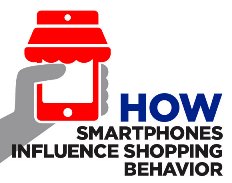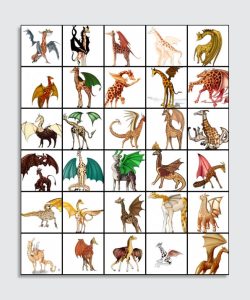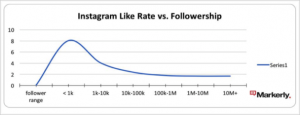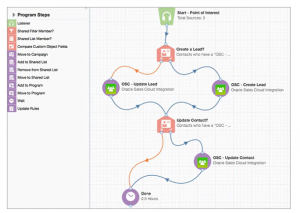Don’t ignore the power of visuals. Columnist Jim Yu discusses ways you can take advantage of images and videos to convert customers.

When people arrive on your site, they will be forming their first impression within 50 milliseconds. They will then be deciding whether or not to stay on the site within 10 seconds.
This miniscule amount of time makes it hard to pull in new visitors with text or great offers. Customers are drawn in or repelled by your web page based upon appearance.
The importance of images and other visual content in website success has become even more apparent in recent years. Brands that already use custom visual content see conversion rates that are about seven times higher than other sites, according to an infographic from SocialMediaToday.
This makes sense when one considers that 65 percent of the population are visual learners. By using visual content, brands can communicate more effectively with their visitors, while also creating a more appealing site that encourages engagement.
The Role Of Images And Content Marketing
The popularity of videos and images is increasing rapidly. Some analysts predict that by 2019, videos will comprise 80 percent of all internet traffic.
Customers will be engaging with videos for a number of different reasons. Videos will become an integral part of communicating with customers, inviting them to learn more about the brand. Branded videos can be used to engage and provide value for viewers, urging them closer to conversion.
Images and videos are an important part of the storytelling process. They are a means of communicating quickly and efficiently with customers.
The average human attention span is a little over eight seconds, and visual content allows brands to distribute valuable information in a format that can be understood within this time frame.
According to the Massachusetts Institute of Technology, the human brain can process images in as little as 13 milliseconds. Infographics, gifs and similar images are particularly valuable for letting visitors know the basics of what the content is discussing.
People who don’t want to read an entire article but are still interested in the material can glance at these images and absorb some of the value of the content without losing time. This helps brands engage with visitors who might have otherwise passed them by.
Videos and images can be used throughout a marketing campaign. The incredible popularity of video platforms, including YouTube — the second most popular search engine behind only Google — means that branded videos can be used to attract video users on social platforms.
Branded videos also can be used to boost social media campaigns and improve content on a website, and they have a home in email campaigns.
If your products or services are particularly complex, visuals can be used to show a demonstration of how they’re used. Videos also can be used to introduce the visitor to past customers and members of the company or demonstrate how the products are created.
This type of personal interaction invites the visitor into the company and establishes a personal connection between the brand and the customer. This helps to boost the relationship and draw the customer closer to conversion.
The Use Of Images In Content Marketing
Companies and their budgets have been responding to the increasingly important role of images. From 2014 to 2015, the average budget for visual content grew by three to five percent, and it’s expected to increase by a similar amount by 2016.
Businesses that have begun to use this type of content have found that certain varieties are more successful than others at engaging customers. For example, professional and commissioned photography and original graphic designs are effective for many brands.
Using custom photography ensures that the images posted are unique to the brand and completely fit with what the content is trying to communicate. Stock photography, on the other hand, is generic. Customers might be seeing your images on other sites. This removes the personal element and doesn’t tell the customer as much about the company and why it’s unique.
Despite the inroads that have been made in the successful usage of images, many businesses are still struggling. The biggest challenge cited by brands has been the lack of time and staff resources to make it happen. More than half, 65.4 percent, say this is their largest obstacle.
Our own research at BrightEdge has found that companies are not capitalizing on images as much as they could.
We measured click-through rates of classic text-based content against visual content on SERPs. We found that sites that landed in positions 1 and 2 on the results pages had higher click-through rates for classic content. Results in positions 3 through 10, however, had higher click-through rates for visual content.

I recommend that brands that are incorporating visual content focus on optimizing their images to ensure that search engines and users can see how their questions are answered. Make sure the image meets the following criteria:
- It’s high quality.
- The description incorporates the image value.
- Semantic markup is used to maximize the understanding of search engines.
- The image sitemap makes it clear how the image fits with the content.
The Psychology Of Imagery And Content Marketing
Understanding why images are so successful can be an enormous asset for brands interested in incorporating visual content in the coming year. Once you understand what visitors are getting out of the images, it can help you capitalize on their preferences and maximize the use of visuals.
Images and videos make people stop and look. The more exciting and engaging the visual content is, the more interested people generally are in sharing the content.
People want to share content that also makes them look good. Content that helps them grow their own reputation in the eyes of their connections is particularly valuable and increases the odds of the content being shared.
With social media, the power of images to create shareable content is easy to see. For example, tweets with images are responded to and retweeted twice as much as those without. Images make the post more appealing, easier to digest and therefore ideal to share with others.
Images also allow brands to demonstrate their value on a far deeper level. Most customers don’t like to buy something that they’ve never seen. They would also prefer to have the opportunity to touch, feel and otherwise experience the product.
Although this is impossible to do online, images and videos create the closest experience to an optimum scenario. Videos allow customers to see the product being demonstrated. They can see images of other people using the product or service and can read their faces for signs of enjoyment and appreciation.
Customers also like to buy based upon emotion. Although consumers like to believe that their purchases are based upon factual, objective decisions, the role of emotions has been proven time and again.
Images can be used to help convey the desired feelings. You can use images to show happiness, comfort, friendship and other positive attributes that help entice people to learn more.
These images also communicate evidence that others are using your product. People like to know that the products they’re considering purchasing have been used successfully by others, so it helps to feature images showing past customers enjoying a product.
People also tend to be interested in products that others in their social circle have used.
Using images to give users a “behind-the-scenes” look at your company also can be immensely valuable. By letting people see the brand leaders, hear salespeople speak and even receive a tour of your office or factory, you can help people feel connected to the brand.
Rather than doing business with a faceless entity, visitors will see you as an individual with whom they can connect. This helps create a feeling of transparency for the brand, which makes it easier for customers to trust your company.
5 Ways To Use Images To Convert Customers At Various Stages Of The Buying Cycle
Once you understand how important images are to the success of your marketing campaigns, you will then want to find ways to incorporate them into your own efforts.
- Use welcoming images on the website to entice visitors to explore the site and introduce them to your brand. This will encourage the early foundation of the relationship and foster a sense of transparency about the company.
- Encourage customers to post images on social media to show the product in action to your brand followers. This will help you tap into the bandwagon effect.
- Post videos on YouTube and other popular third-party platforms to spread the brand message. Remember that on these third-party platforms, the focus will need to be on providing value — product videos or videos that require background information about the brand will struggle to find an audience.
- Use images and videos in email newsletters to keep people engaged and provide them with easy-to-digest information that they can view quickly.
- Create product page images and videos to explain what sets you apart and to walk people through the buying process. Imagine your videos are the opportunity to give your visitors a personal product demonstration on your landing pages.
Visual content is quickly beginning to dominate the digital ecosystem. Brands need to understand the role these images and videos should play in their content marketing efforts and why they are effective.
This can help you maximize your online marketing efforts heading into 2016.
Some opinions expressed in this article may be those of a guest author and not necessarily Marketing Land. Staff authors are listed here.











